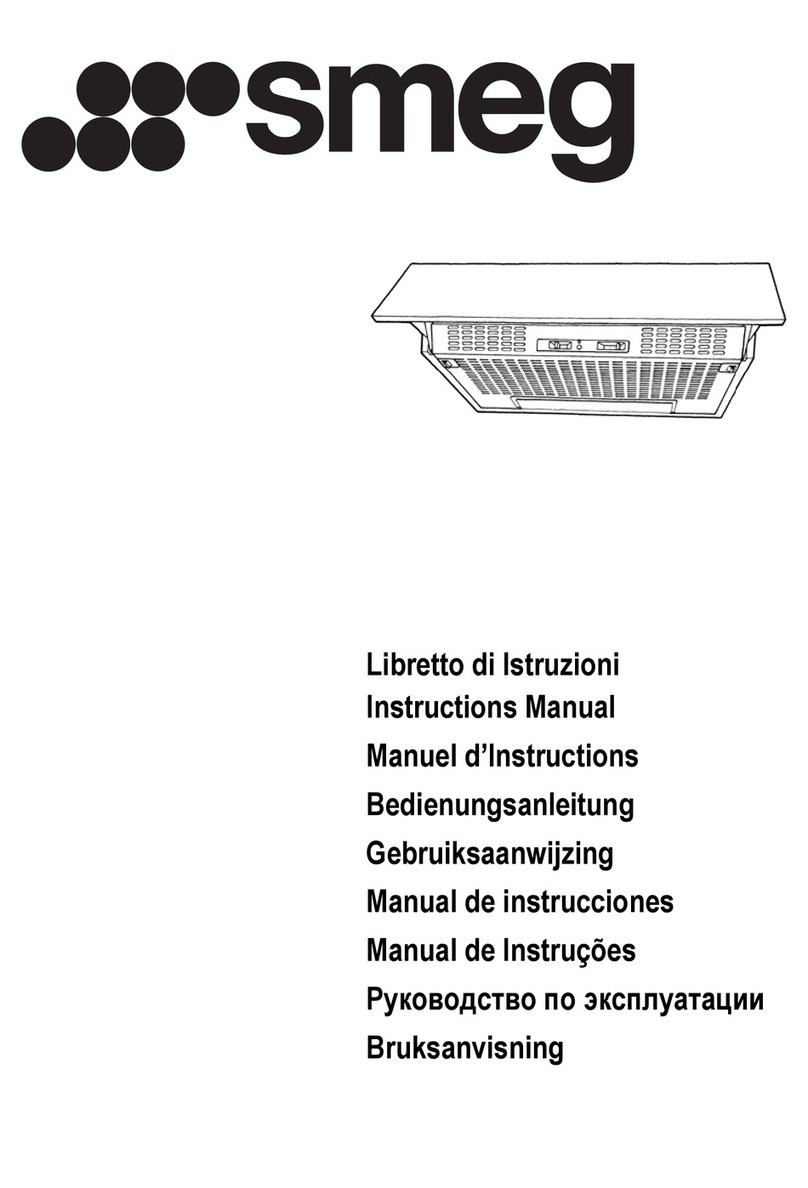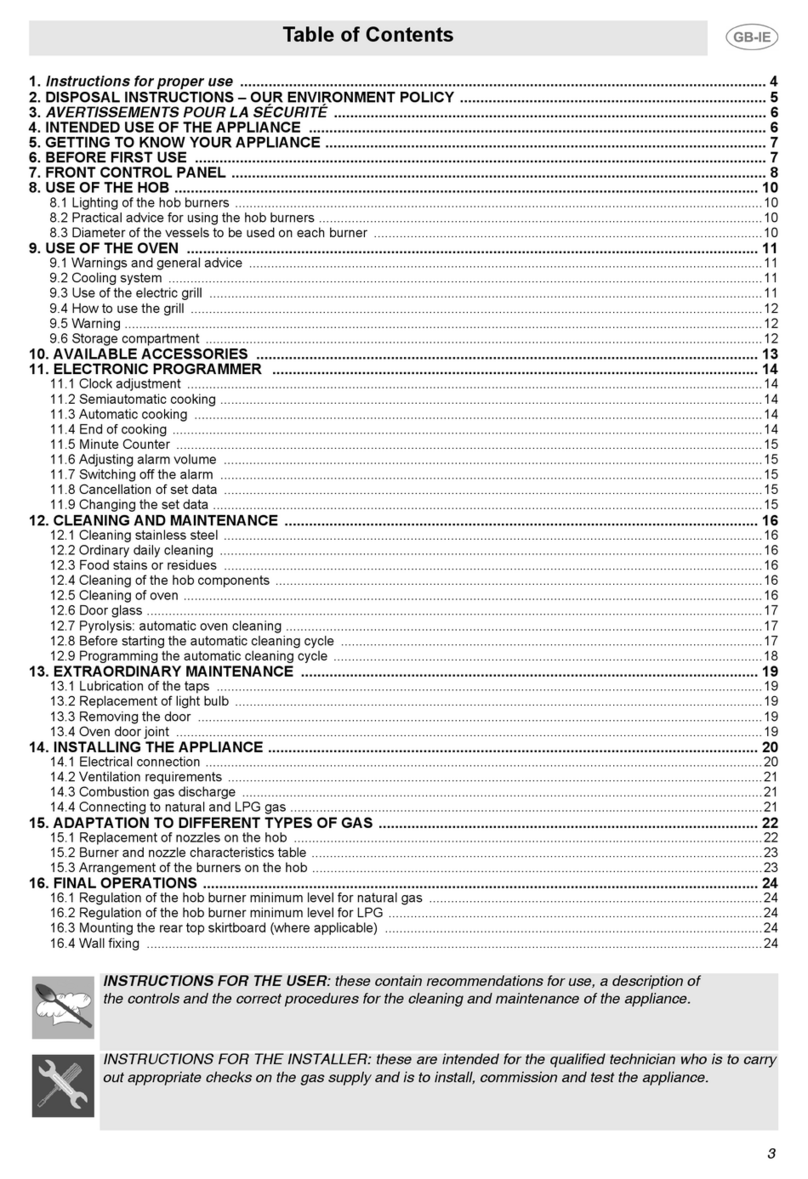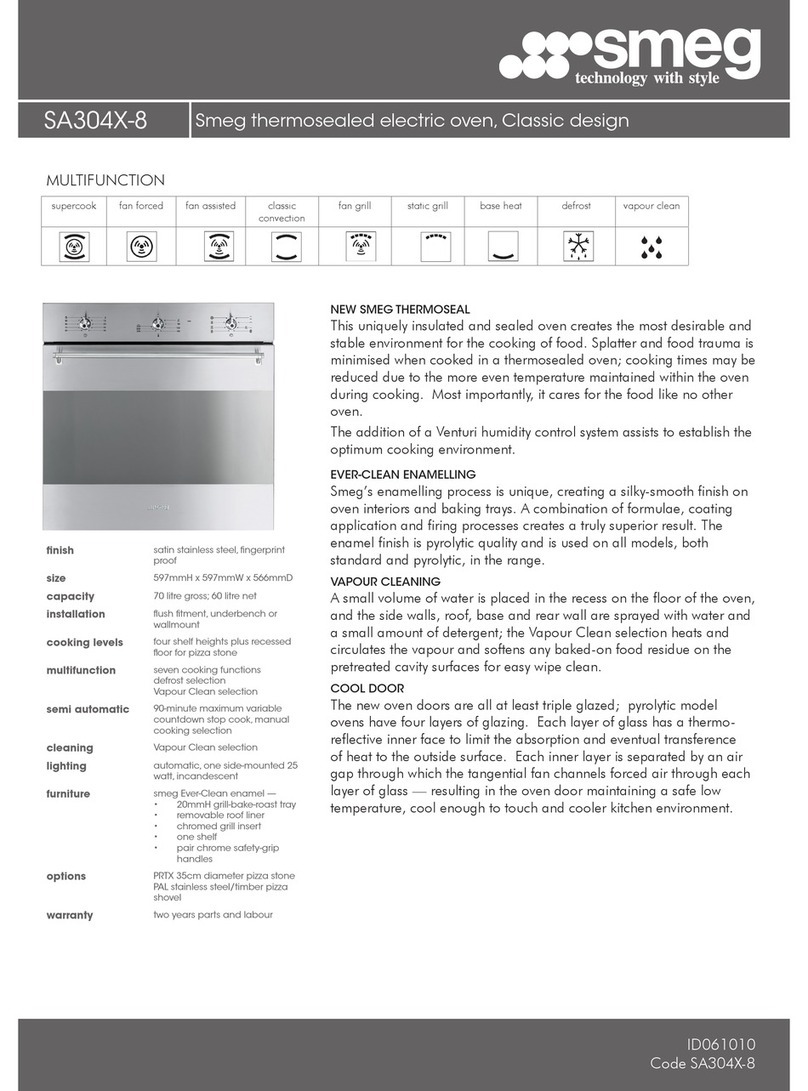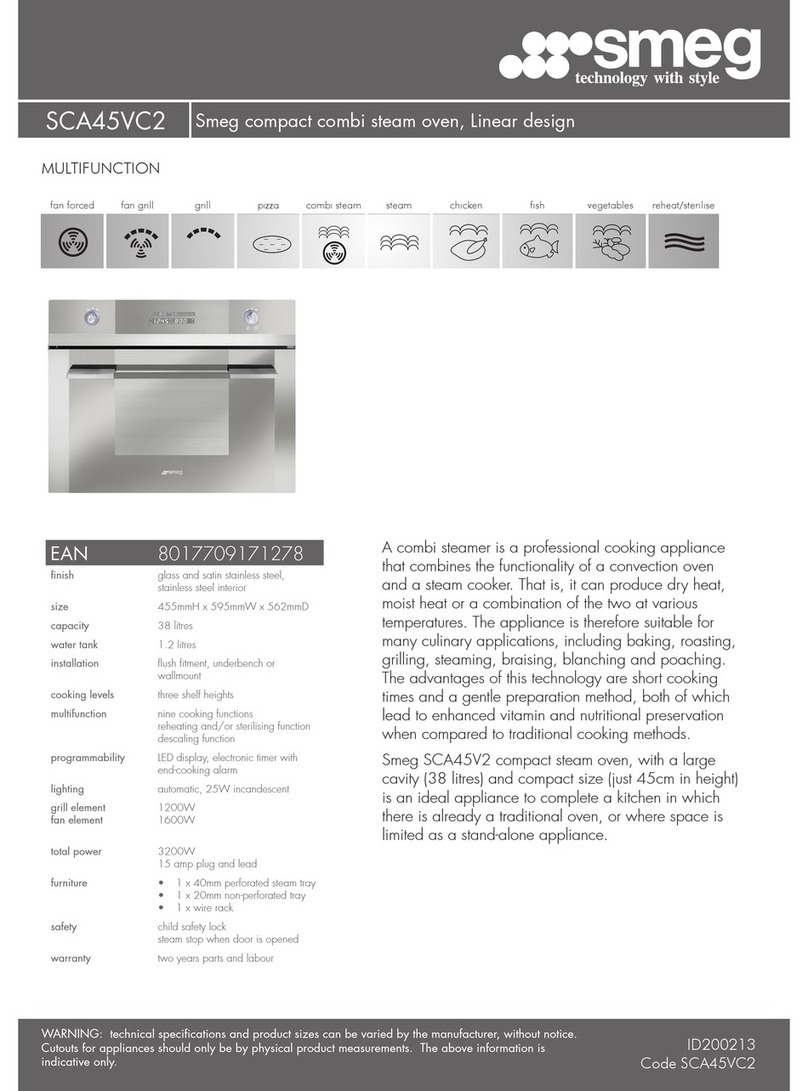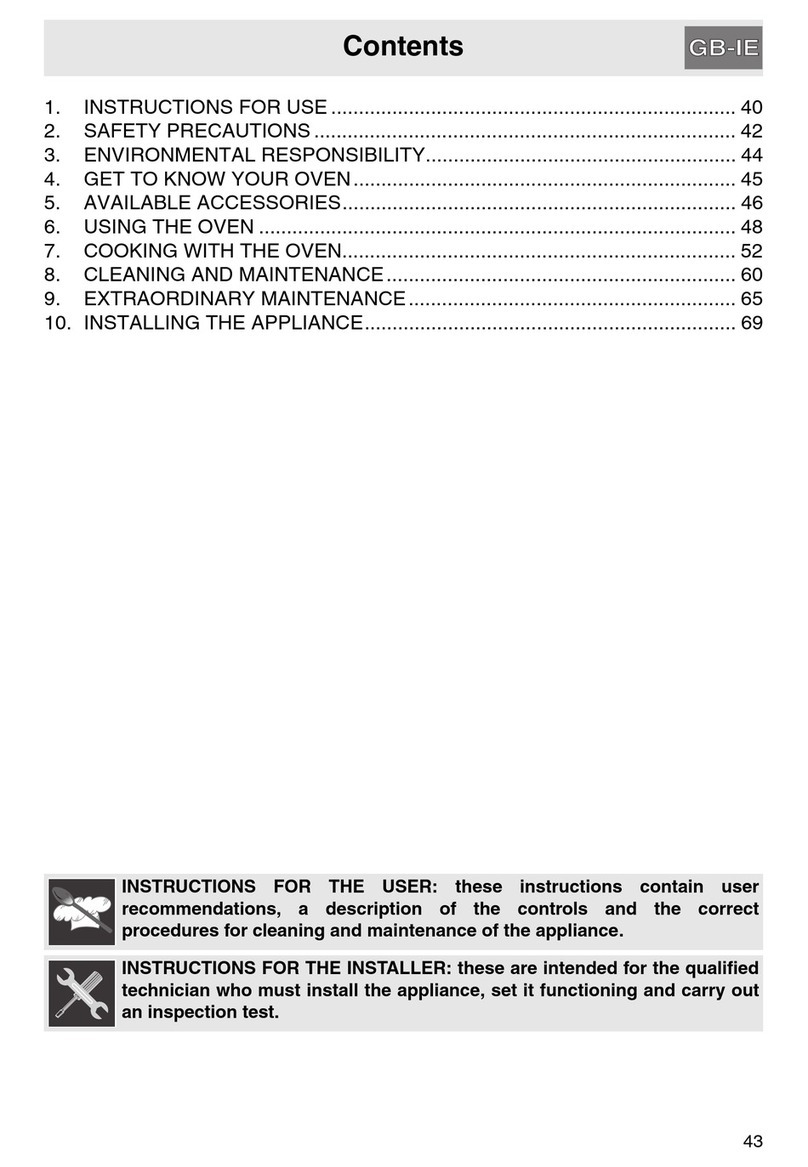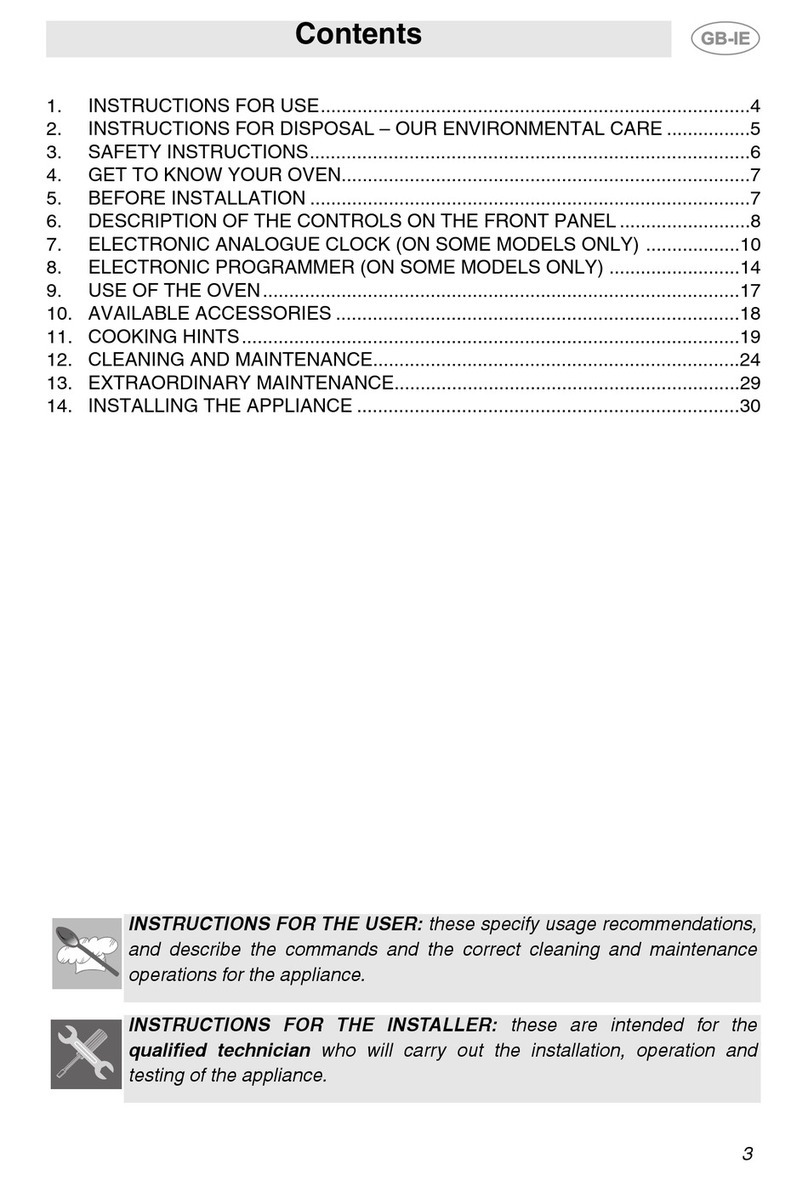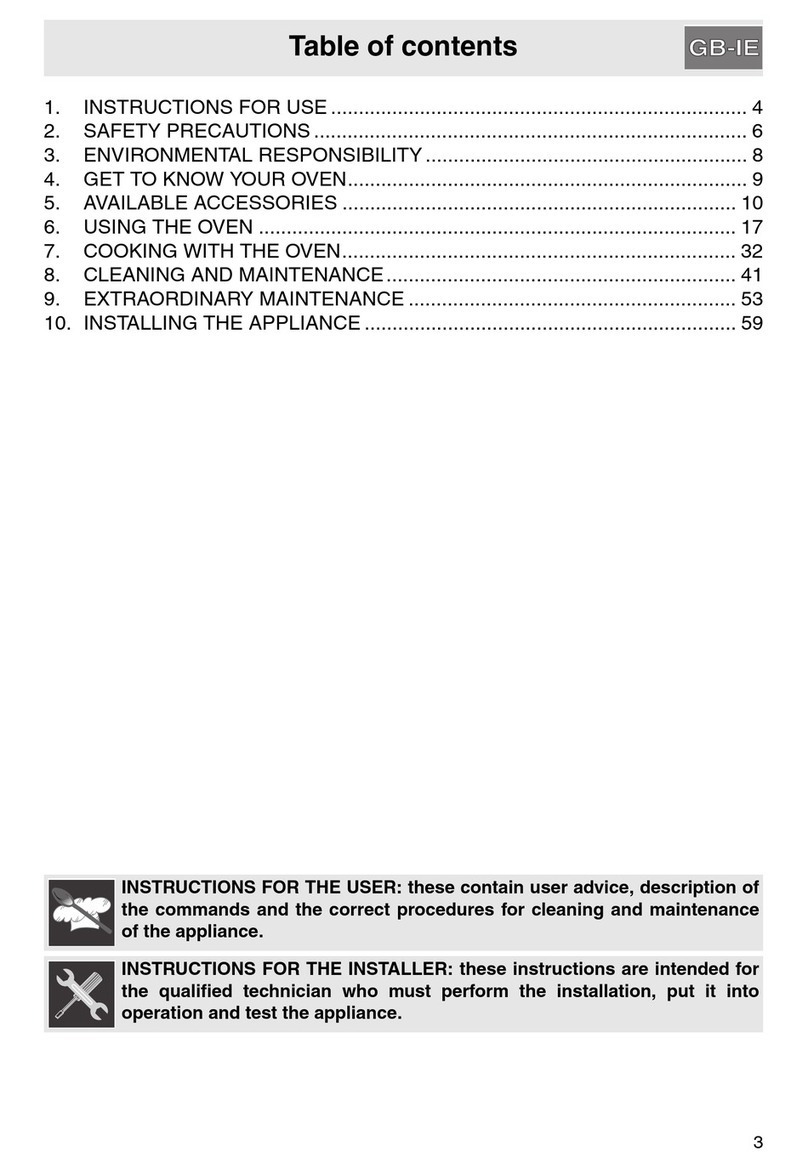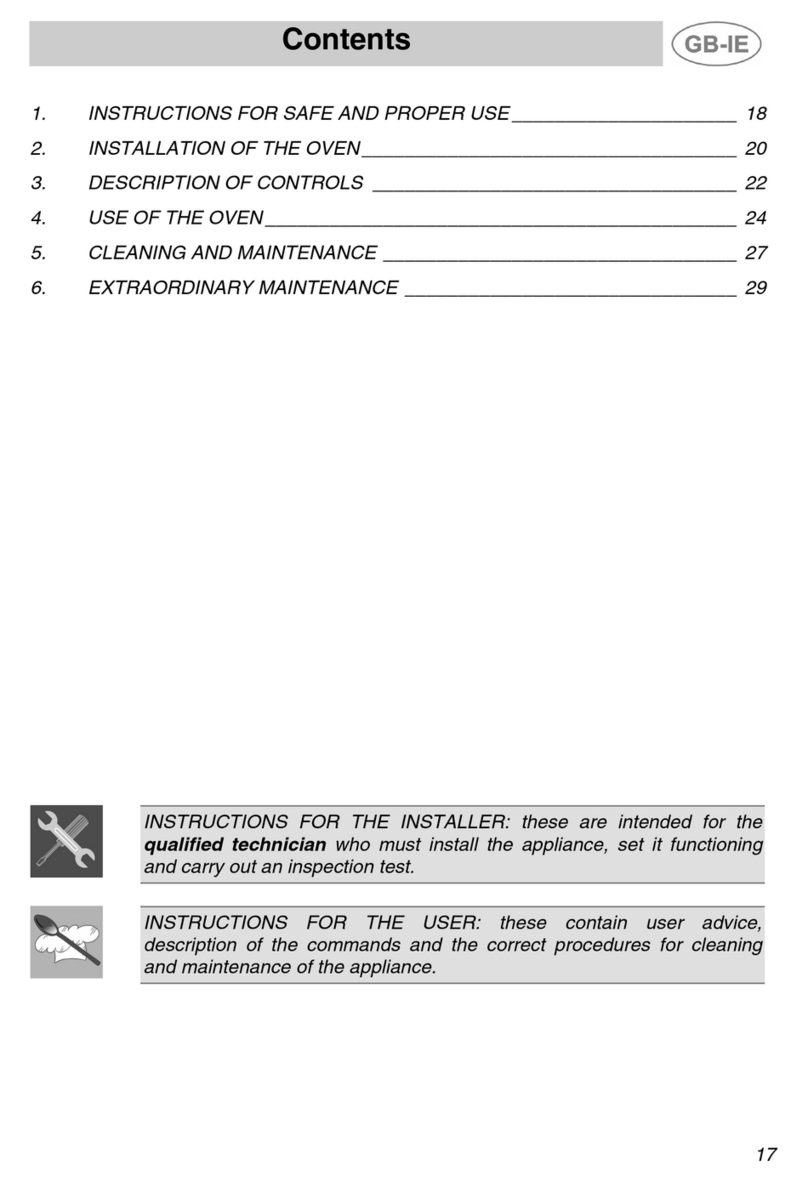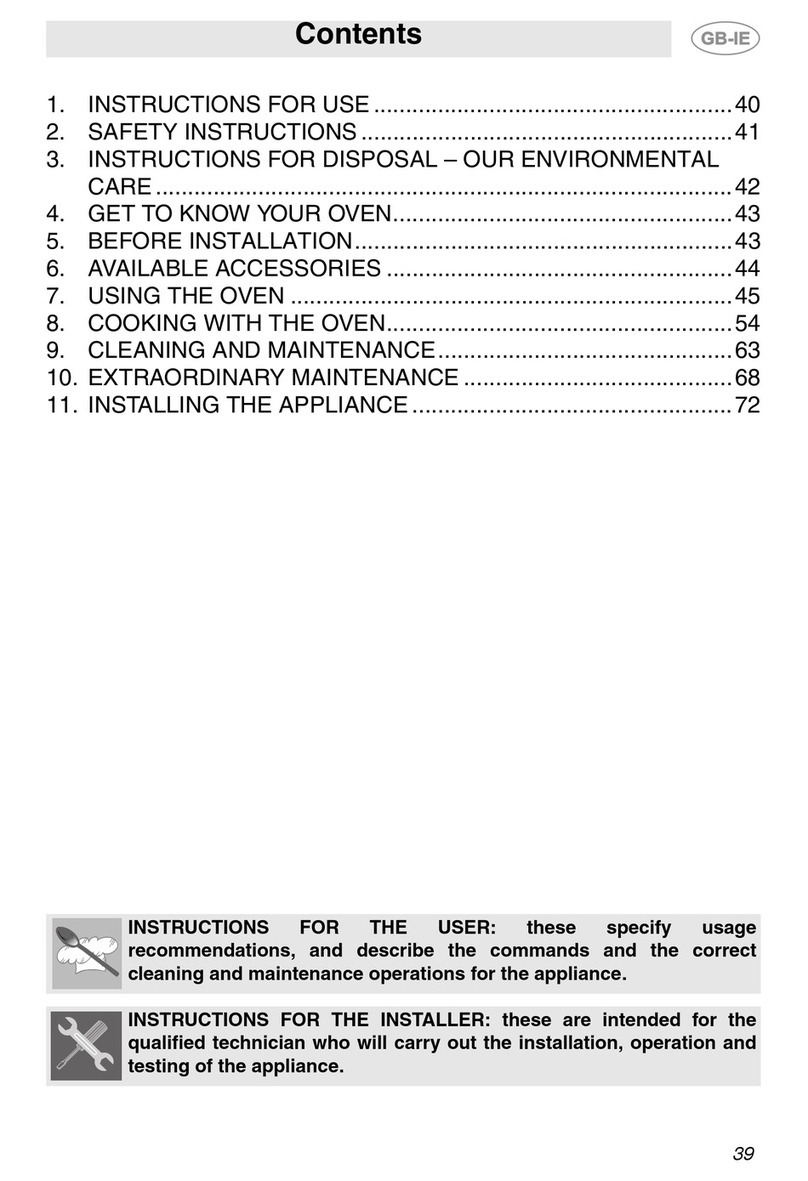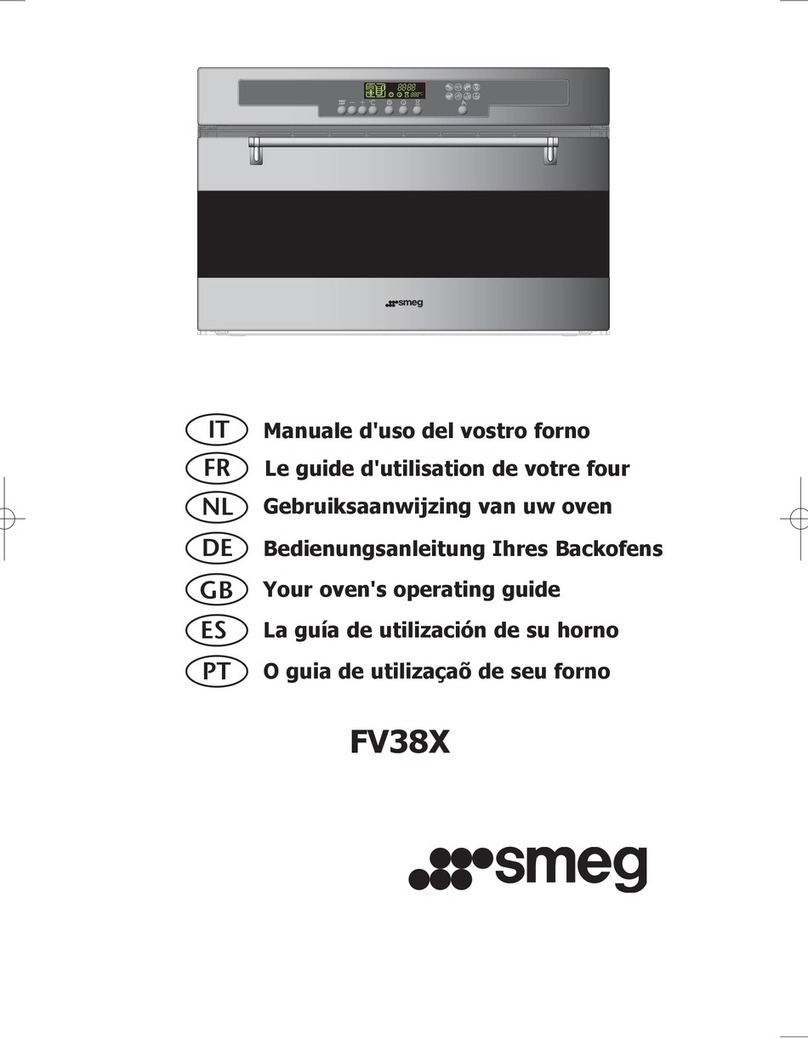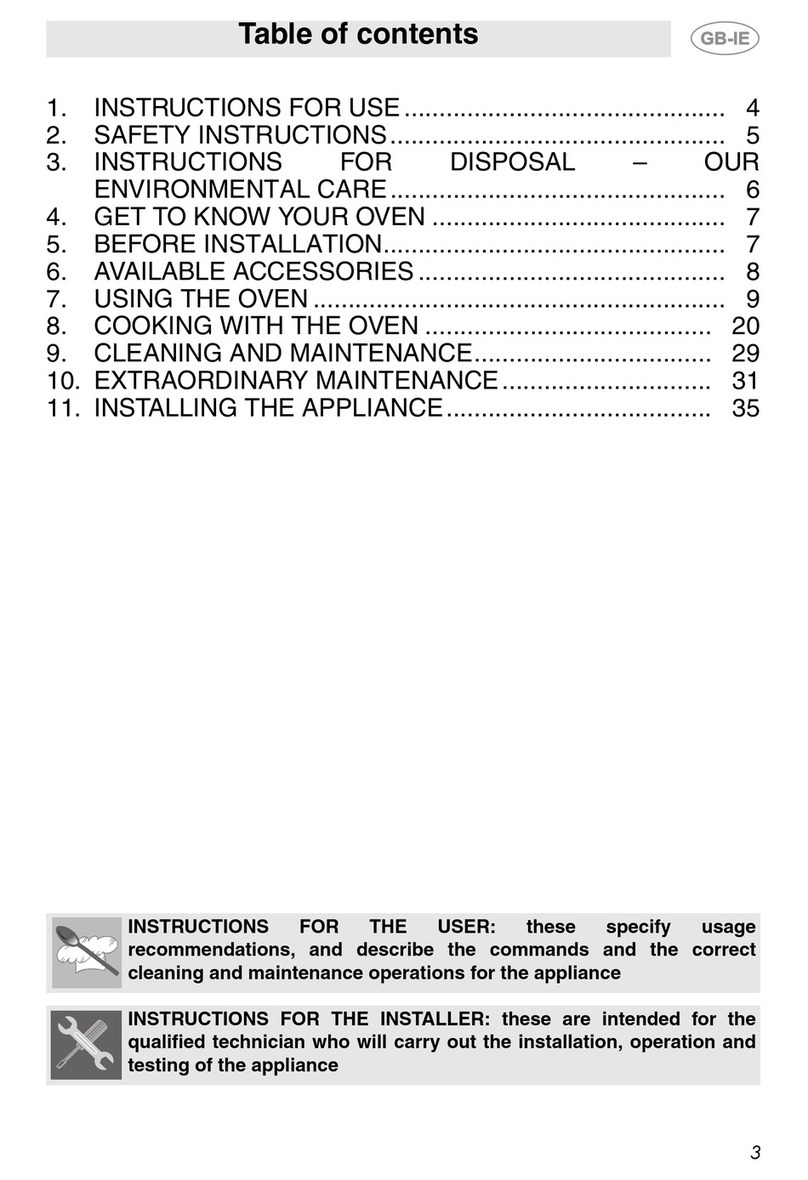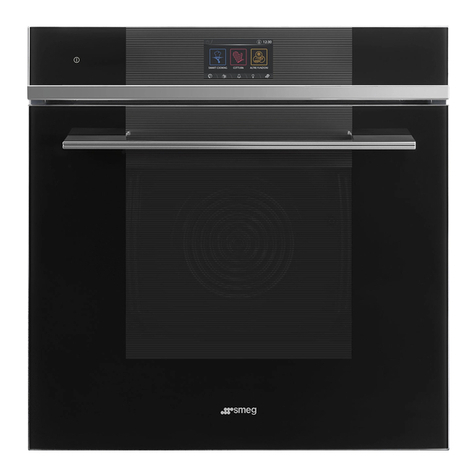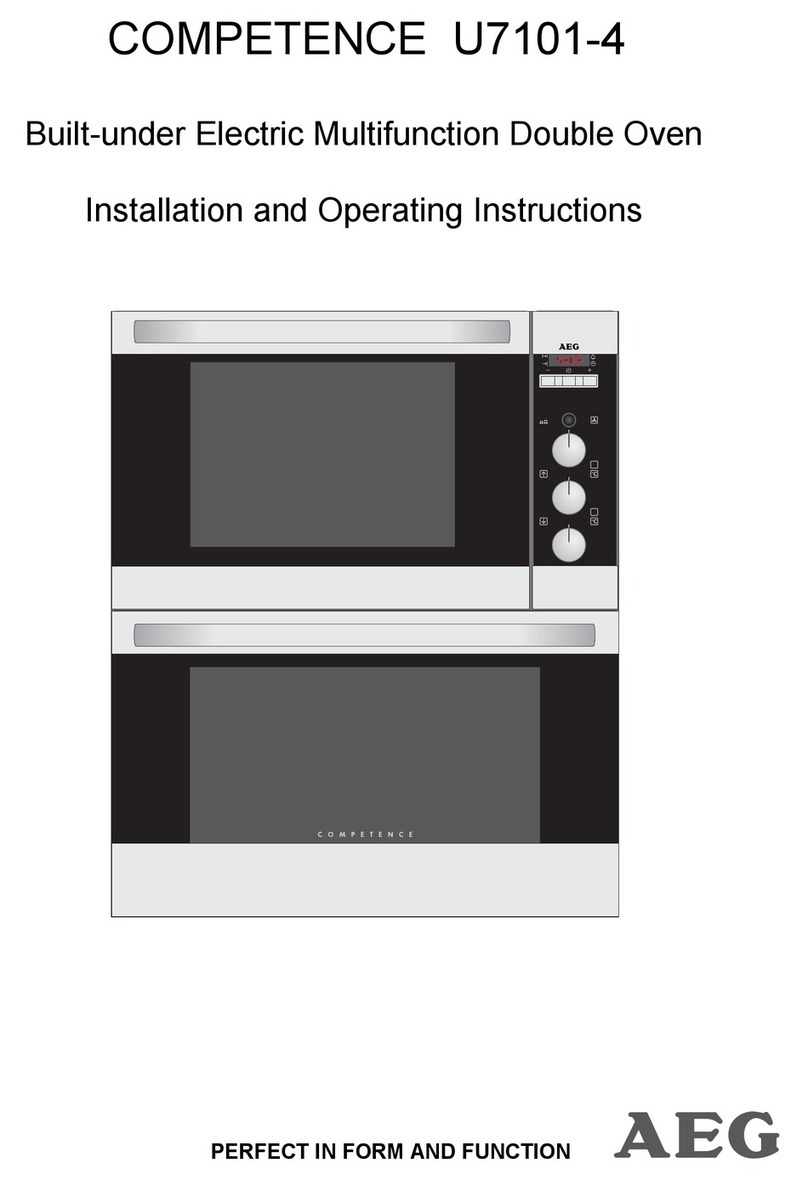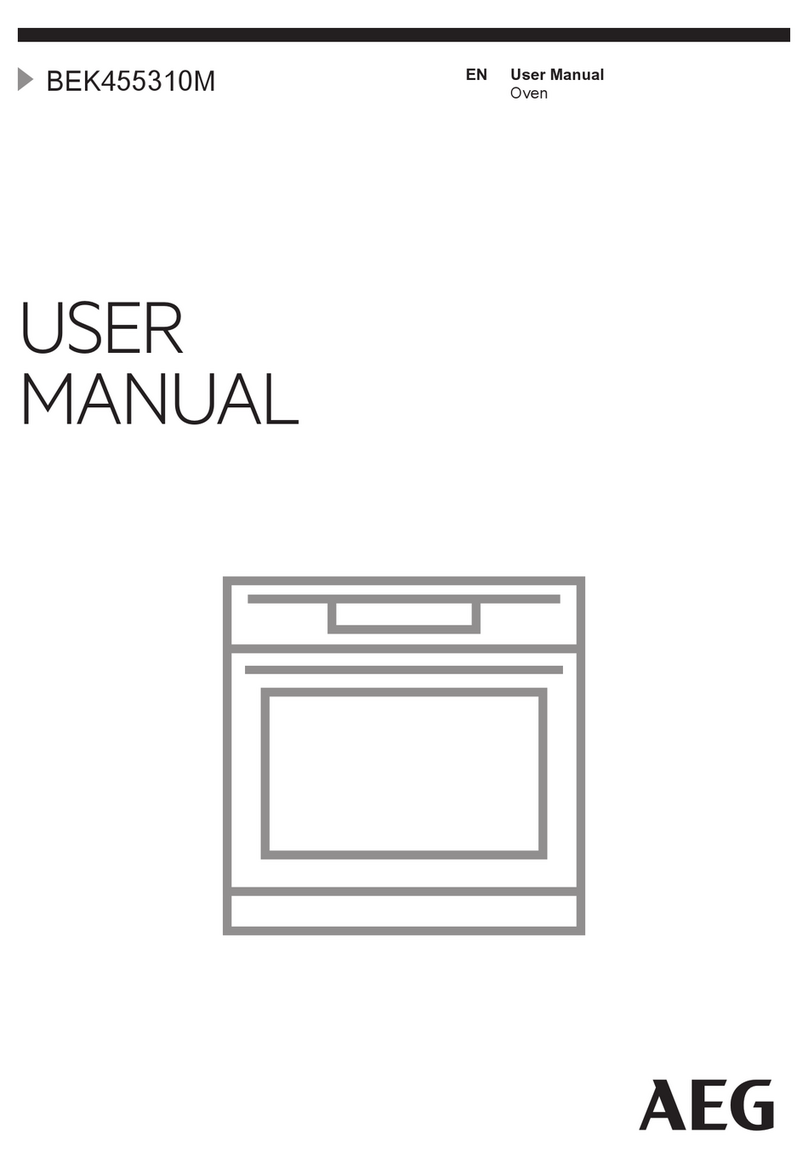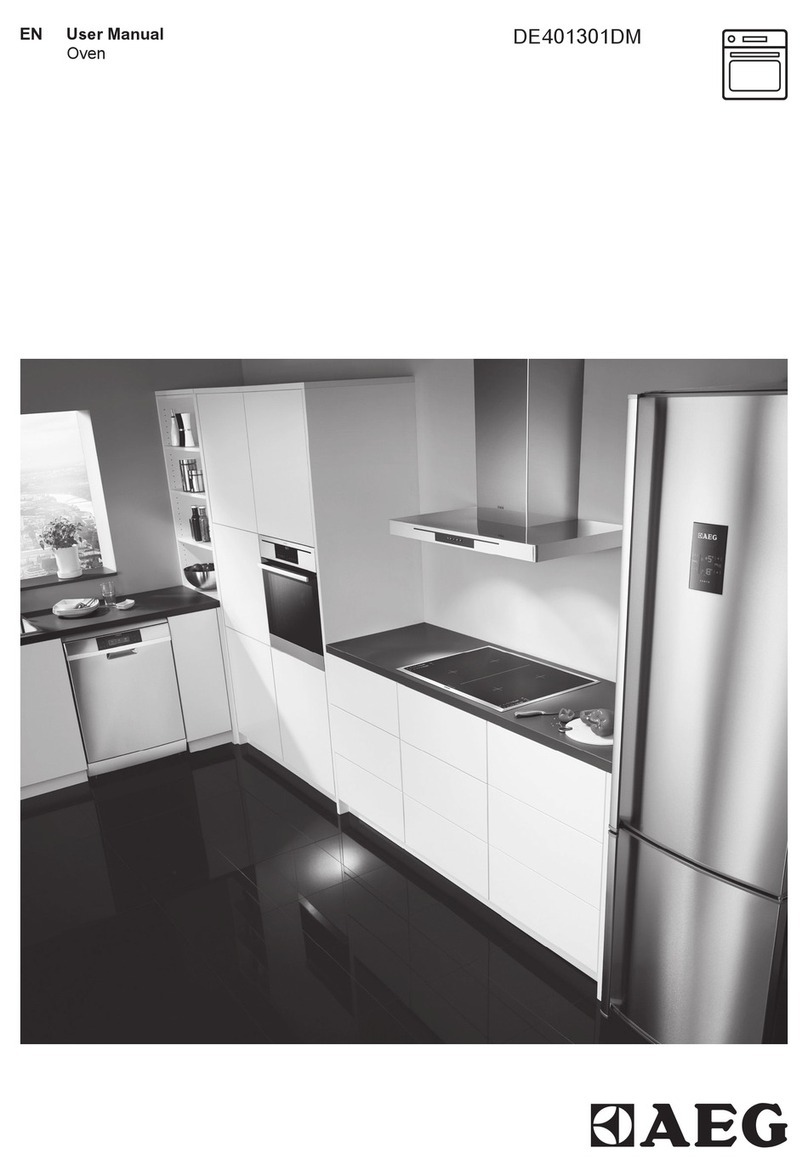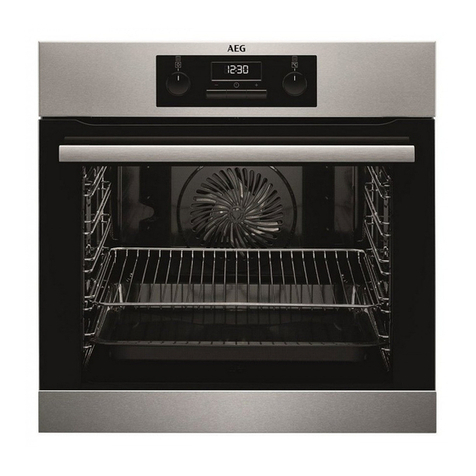
Instructions
7
EN
• Position the appliance into the
cabinet cut-out with the help of a
second person.
• To prevent any possible
overheating, the appliance should
not be installed behind a
decoration door or a panel.
• Before installation, make sure that
the local distribution conditions
(nature and pressure of the gas)
and the adjustment of the
appliance are compatible.
• This appliance is not connected to
an exhaust system for combustion
products. It must be installed and
connected in compliance with the
current installation regulations.
Special attention should be paid
to the relevant requirements as for
ventilation.
• The adjustment conditions for this
appliance are shown on the gas
setting label.
• Have the gas connection
performed by authorised staff.
• Installation using a hose must be
carried out so that the length of
the hose does not exceed
2 metres when fully extended for
steel hoses and 1.5 metres for
rubber hoses.
• The hoses should not come into
contact with moving parts and
should not be crushed in any way.
• If required, use a pressure
regulator that complies with
current regulations.
• After carrying out any operation,
check that the tightening torque of
gas connections is between
10 Nm and 15 Nm.
• At the end of the installation, check
for any leaks with a soapy
solution, never with a flame.
• Have the electrical connection
performed by authorised
technicians.
• The appliance must be connected
to ground in compliance with
electrical system safety standards.
• Use cables withstanding a
temperature of at least 90 °C.
• The tightening torque of the screws
of the terminal board leads must
be 1.5 - 2 Nm.
For this appliance
• Ensure that the appliance is
switched off before replacing the
bulb.
• Do not rest any weight or sit on the
open door of the appliance.
• Take care that no objects are stuck
in the doors.

